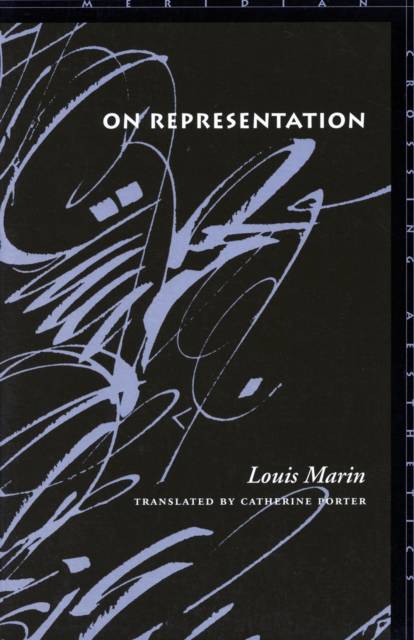
- Afhalen na 1 uur in een winkel met voorraad
- Gratis thuislevering in België vanaf € 30
- Ruim aanbod met 7 miljoen producten
- Afhalen na 1 uur in een winkel met voorraad
- Gratis thuislevering in België vanaf € 30
- Ruim aanbod met 7 miljoen producten
Omschrijving
At his death in 1992, the eminent philosopher, critic, and theorist Louis Marin left, in addition to a dozen influential books (including Sublime Poussin, Stanford, 1999), a corpus of some three hundred articles and essays published in journals and anthologies. A collection of twenty-two essays that appeared between 1971 and 1992, this book interrogates the theory and practice of representation as it is carried out by both linguistic and graphic signs, and thus the complex relation between language and image, between perception and conception.
The essays are grouped in four parts that reflect the continuity and coherence of Marin's interests in semiology, narrative, visuality, and painting. The interdisciplinary horizon of the book draws on multiple scholarly resources--the cultural history of the seventeenth century, the philosophy of language, the tools of discourse analysis, the history of art and aesthetics, the analysis of reception--to address a stunning diversity of subjects ranging from historical painting through cartography to the processes of deciphering texts, interpreting stories, and reading images.
Throughout the essays, Marin's reflection on representation is supported and deepened by his brilliant exegesis of graphic art. His analysis of works by Caravaggio, Philippe de Champaigne, Le Brun, and Poussin, among others, provides the armature that allows him to describe both the structural logic of representation and the intricate processes of production and reception that make it dynamic and unstable. Marin demonstrates with consummate rigor why the pursuit of a general theory of representation is experienced by artists and critics alike as an inevitable, yet unattainable objective.
Specificaties
Betrokkenen
- Auteur(s):
- Vertaler(s):
- Uitgeverij:
Inhoud
- Aantal bladzijden:
- 464
- Taal:
- Engels
- Reeks:
Eigenschappen
- Productcode (EAN):
- 9780804741514
- Verschijningsdatum:
- 1/10/2002
- Uitvoering:
- Paperback
- Formaat:
- Trade paperback (VS)
- Afmetingen:
- 205 mm x 296 mm
- Gewicht:
- 625 g

Alleen bij Standaard Boekhandel
Beoordelingen
We publiceren alleen reviews die voldoen aan de voorwaarden voor reviews. Bekijk onze voorwaarden voor reviews.











